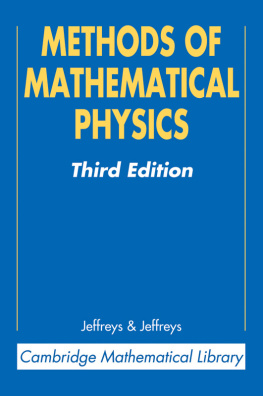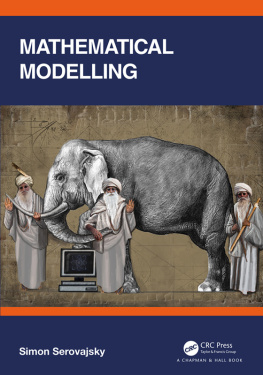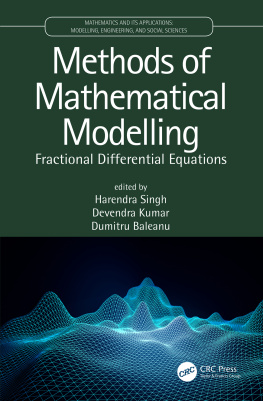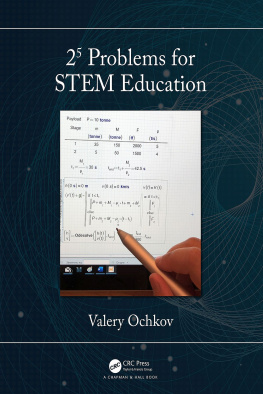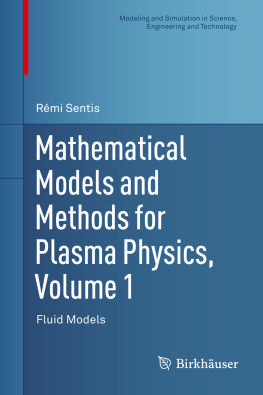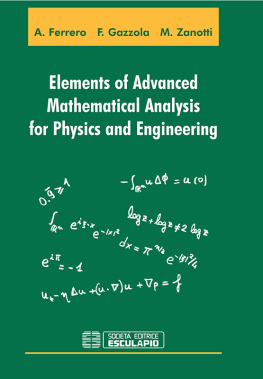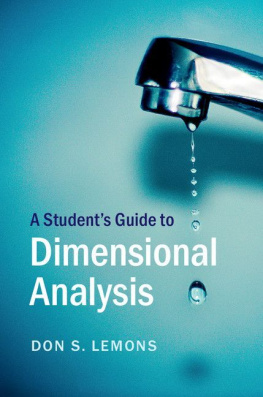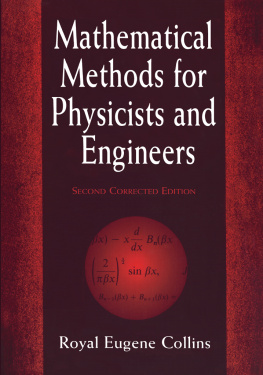Brett Borden - Mathematical methods in physics, engineering and chemistry
Here you can read online Brett Borden - Mathematical methods in physics, engineering and chemistry full text of the book (entire story) in english for free. Download pdf and epub, get meaning, cover and reviews about this ebook. year: 2020, publisher: Wiley, genre: Children. Description of the work, (preface) as well as reviews are available. Best literature library LitArk.com created for fans of good reading and offers a wide selection of genres:
Romance novel
Science fiction
Adventure
Detective
Science
History
Home and family
Prose
Art
Politics
Computer
Non-fiction
Religion
Business
Children
Humor
Choose a favorite category and find really read worthwhile books. Enjoy immersion in the world of imagination, feel the emotions of the characters or learn something new for yourself, make an fascinating discovery.

- Book:Mathematical methods in physics, engineering and chemistry
- Author:
- Publisher:Wiley
- Genre:
- Year:2020
- Rating:5 / 5
- Favourites:Add to favourites
- Your mark:
- 100
- 1
- 2
- 3
- 4
- 5
Mathematical methods in physics, engineering and chemistry: summary, description and annotation
We offer to read an annotation, description, summary or preface (depends on what the author of the book "Mathematical methods in physics, engineering and chemistry" wrote himself). If you haven't found the necessary information about the book — write in the comments, we will try to find it.
Brett Borden: author's other books
Who wrote Mathematical methods in physics, engineering and chemistry? Find out the surname, the name of the author of the book and a list of all author's works by series.
Mathematical methods in physics, engineering and chemistry — read online for free the complete book (whole text) full work
Below is the text of the book, divided by pages. System saving the place of the last page read, allows you to conveniently read the book "Mathematical methods in physics, engineering and chemistry" online for free, without having to search again every time where you left off. Put a bookmark, and you can go to the page where you finished reading at any time.
Font size:
Interval:
Bookmark:
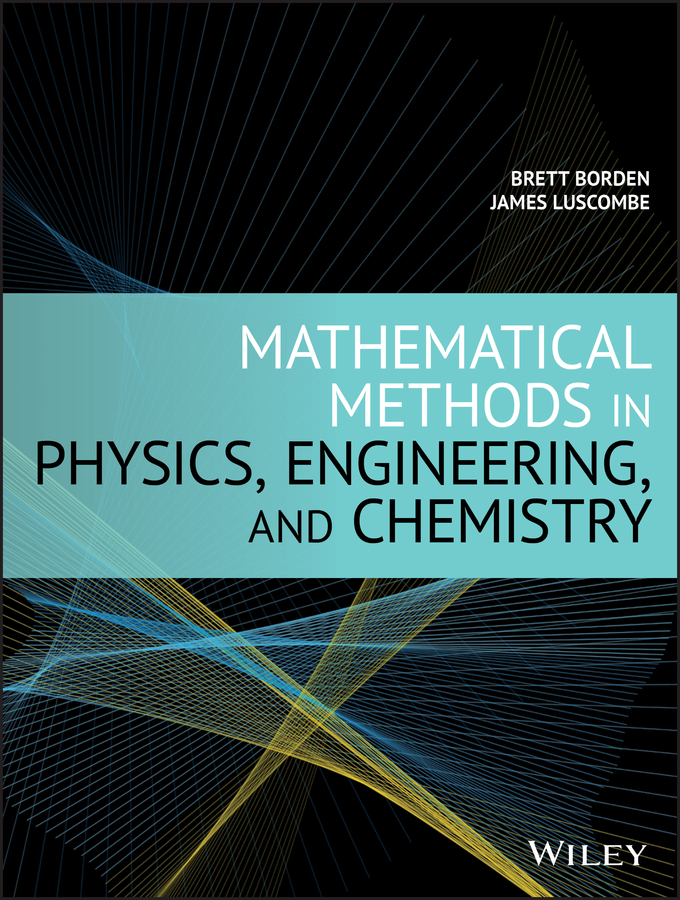
- Chapter 3
- Chapter 5
- Chapter 6
- Chapter 7
- Chapter 8
- Chapter 1
- Chapter 2
- Chapter 3
- Chapter 4
- Chapter 5
- Chapter 6
- Chapter 7
- Chapter 8
- Chapter 9
- Chapter 10
- Chapter 11
- Appendix A
- Appendix C
- Appendix D
BRETT BORDEN AND JAMES LUSCOMBE
Naval Postgraduate School
Monterey, CA, USA

This edition first published 2020
2020 John Wiley & Sons, Inc.
All rights reserved. No part of this publication may be reproduced, stored in a retrieval system, or transmitted, in any form or by any means, electronic, mechanical, photocopying, recording or otherwise, except as permitted by law. Advice on how to obtain permission to reuse material from this title is available at http://www.wiley.com/go/permissions.
The right of Brett Borden and James Luscombe to be identified as the authors of this work has been asserted in accordance with law.
Registered Office
John Wiley & Sons, Inc., 111 River Street, Hoboken, NJ 07030, USA
Editorial Office
111 River Street, Hoboken, NJ 07030, USA
For details of our global editorial offices, customer services, and more information about Wiley products visit us at www.wiley.com
Wiley also publishes its books in a variety of electronic formats and by print-on-demand. Some content that appears in standard print versions of this book may not be available in other formats.
Limit of Liability/Disclaimer of Warranty
In view of ongoing research, equipment modifications, changes in governmental regulations, and the constant flow of information relating to the use of experimental reagents, equipment, and devices, the reader is urged to review and evaluate the information provided in the package insert or instructions for each chemical, piece of equipment, reagent, or device for, among other things, any changes in the instructions or indication of usage and for added warnings and precautions. While the publisher and authors have used their best efforts in preparing this work, they make no representations or warranties with respect to the accuracy or completeness of the contents of this work and specifically disclaim all warranties, including without limitation any implied warranties of merchantability or fitness for a particular purpose. No warranty may be created or extended by sales representatives, written sales materials or promotional statements for this work. The fact that an organization, website, or product is referred to in this work as a citation and/or potential source of further information does not mean that the publisher and authors endorse the information or services the organization, website, or product may provide or recommendations it may make. This work is sold with the understanding that the publisher is not engaged in rendering professional services. The advice and strategies contained herein may not be suitable for your situation. You should consult with a specialist where appropriate. Further, readers should be aware that websites listed in this work may have changed or disappeared between when this work was written and when it is read. Neither the publisher nor authors shall be liable for any loss of profit or any other commercial damages, including but not limited to special, incidental, consequential, or other damages
Library of Congress Cataloging-in-Publication data applied for
ISBN: 9781119579656
Cover Design: Wiley
Cover Image: FrankRamspott/Getty Images
Mathematics is deeply ingrained in physics, in how it's taught and how it's practiced. Courses in mathematical methods of physics are core components of physics curricula, at the advanced undergraduate and beginning graduate levels. In our experience, textbooks that seek to provide a comprehensive coverage of mathematical methods tend not to mesh well with the needs of today's students, who face curricula continually under pressure to squeeze more content into the allotted time. The amount of mathematics one could be called upon to know in a scientific career is daunting hence, the temptation to try to cover it all in textbooks. We have developed, over years of teaching, a set of notes outlining the essentials of the subject, which has turned into this book. Our goal has been to emphasize topics that the majority of students will require in the course of their studies. Not every student will go on to a career in theoretical physics, and thus not every student need be exposed to specialized topics at this point in their education.
Following is a sketch of the contents of this book.
- Linear algebra: What's more important in the education of scientists and engineers, calculus or linear algebra? We opt for the latter. Students are assumed to have had vector calculus (a standard component of Calculus III), a summary of which is provided in .
- Partial differential equations: A pervasive concept in physics is that of fields, the behavior of which in space and time is described by partial differential equations (PDEs). To study physics at the advanced undergraduate level, one must be proficient in solving PDEs and that provides another overarching theme: Boundary value problems. cover separate topics that could form the basis of a followon course or a graduatelevel course appropriate for some instructional programs. Ambitious programs could cover the entire book in one semester.
.
- Special functions: We cover the most commonly encountered special functions. The gamma function is treated in . We omit special functions seen only in other courses, e.g. the Laguerre and Hermite polynomials.
- Complex analysis: It's never quite obvious where a chapter on complex analysis should go. We place the theory of analytic functions (). We cover the standard topics of contour integration and Cauchy's theorem. We develop the nonstandard topics of the approximation of integrals (steepest descent and stationary phase) and the analytic signal (Hilbert transform, the PaleyWeiner and Titchmarsh theorems). The latter is important in applications involving signal processing, which many students end up doing in their thesis work, and is natural to include in a discussion on analytic functions.
- Green functions: Inhomogeneous differential equations are naturally solved using the method of Green functions. We illustrate (in ) the Green function method for the inhomogeneous Helmholtz, diffusion, and wave equations.
- Integral equations: Many key equations occur as integral equations in scattering theory, for example, either quantum or electromagnetic. We cover integral equations in , a topic not always included in books at this level. Yet, it's important for students to understand that the separationofvariables method (introduced earlier in the book) is often not realistic it relies on the boundaries of systems having rather simple shapes (spherical, cylindrical, etc.). Numerical solutions of PDEs are often based on integralequation approaches.
- Tensor analysis: The book ends with an introduction to tensors, . Tensors are motivated as a mathematical tool for treating systems featuring anisotropy, and for their fundamental role in establishing covariant equations. We present tensors with sufficient depth so as to provide a foundation for their use in the special theory of relativity. The covariant derivative, developed at the end of the chapter, would be the starting point for more advanced applications.
Font size:
Interval:
Bookmark:
Similar books «Mathematical methods in physics, engineering and chemistry»
Look at similar books to Mathematical methods in physics, engineering and chemistry. We have selected literature similar in name and meaning in the hope of providing readers with more options to find new, interesting, not yet read works.
Discussion, reviews of the book Mathematical methods in physics, engineering and chemistry and just readers' own opinions. Leave your comments, write what you think about the work, its meaning or the main characters. Specify what exactly you liked and what you didn't like, and why you think so.

